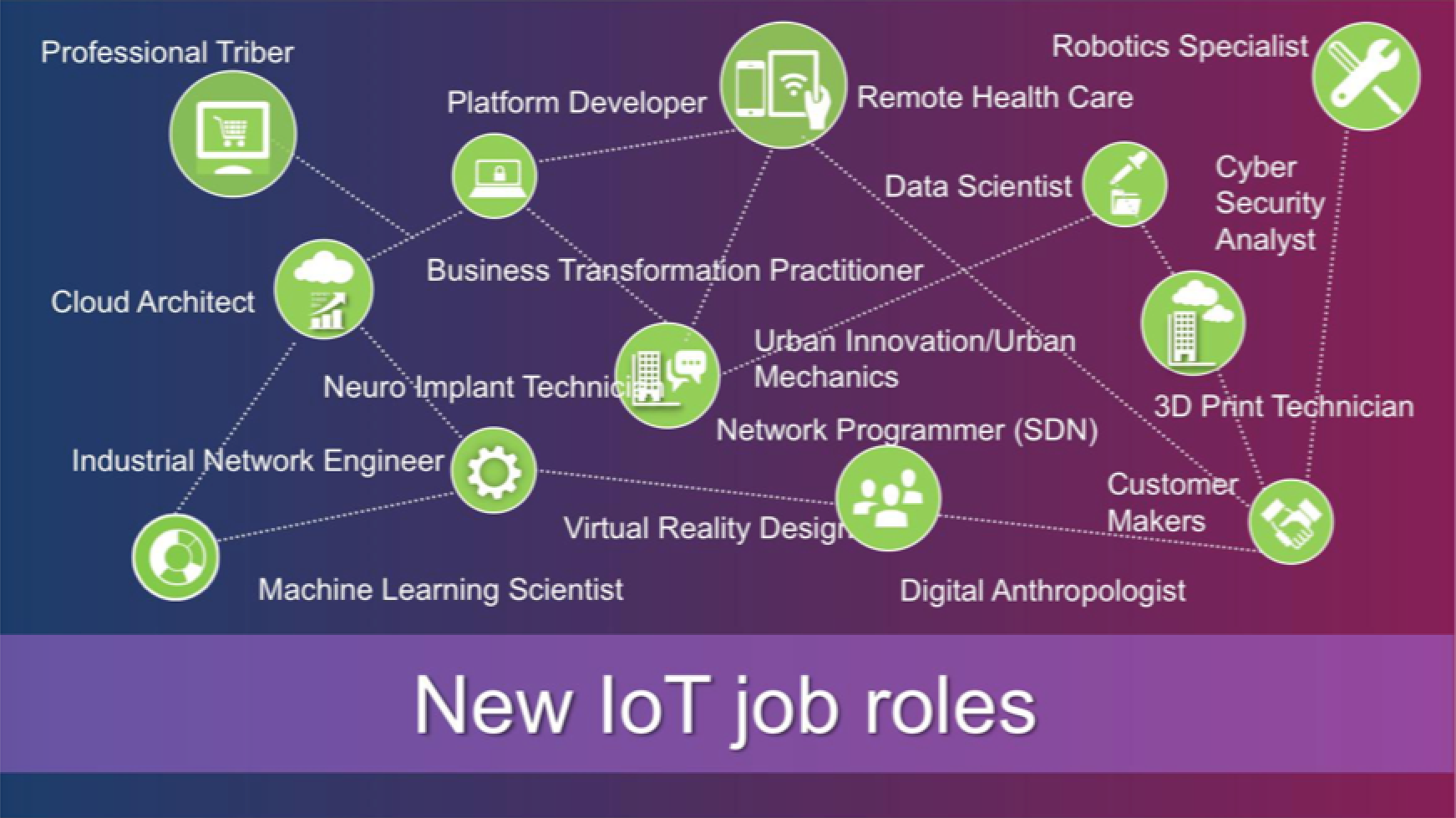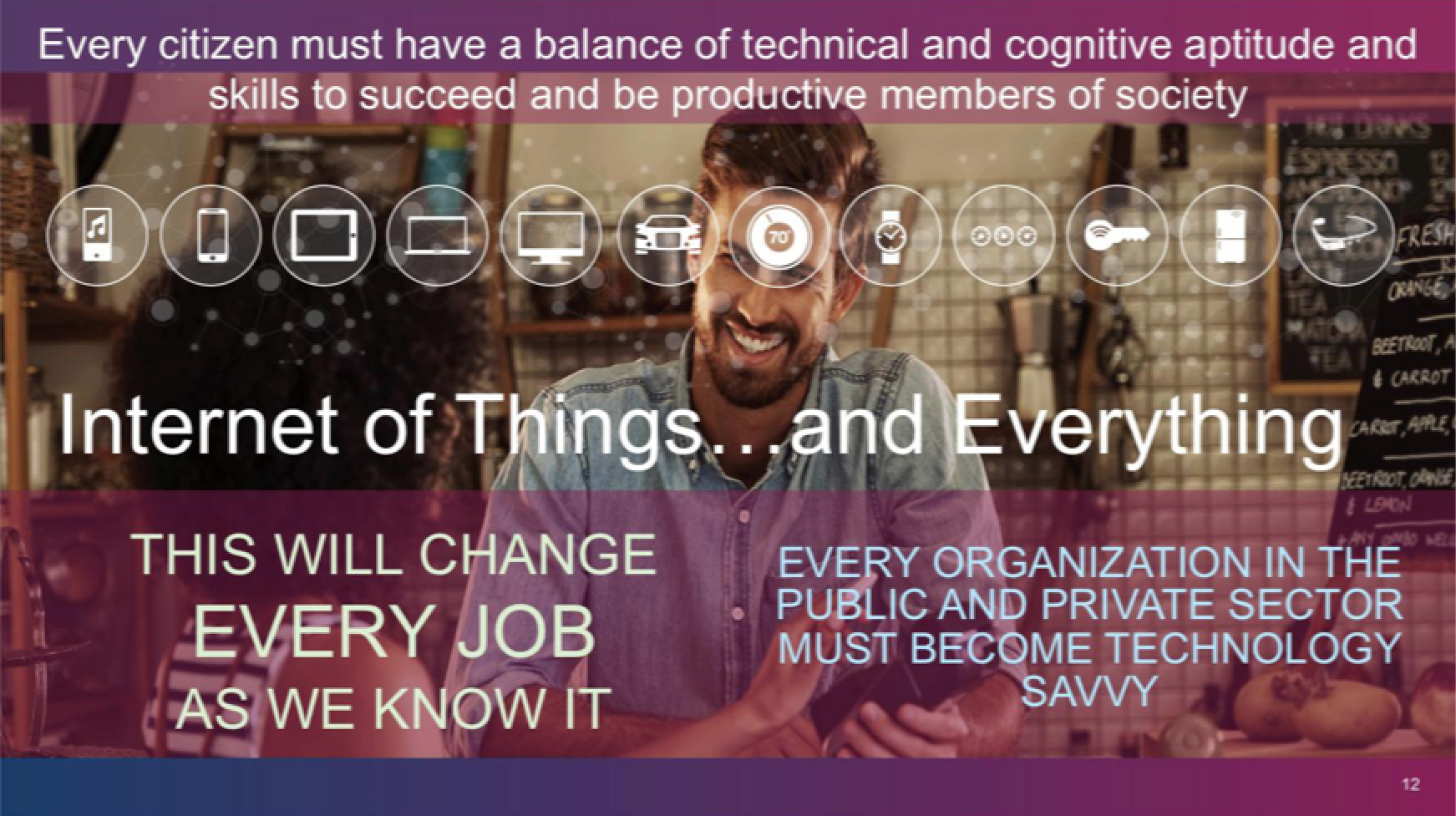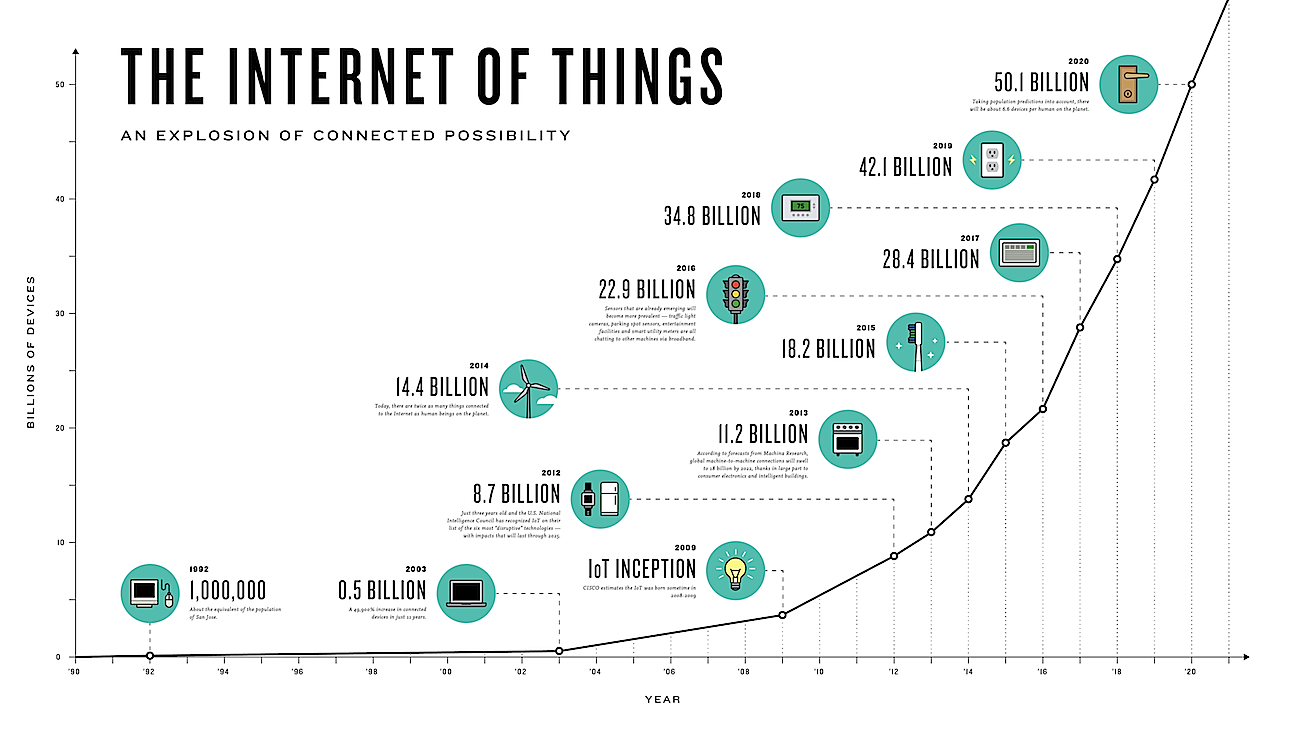The Internet of Things (IoT) & Collaborative IQ
 Image Credit: Jeanne Beliveau-Dunn, Building Human Capital for SustainableCities
Image Credit: Jeanne Beliveau-Dunn, Building Human Capital for SustainableCities
The Internet of Things combines with the Internet of Talent to produce Collaborative Intelligence, which integrates the best capabilities of devices and the unique complex pattern recognition and interpretive skills of humans.
The Internet of Things (IoT) is the network of physical objects, devices, vehicles, buildings and other items embedded with electronics, software, sensors, and network connectivity that enables these “things” to collect and exchange data. The Internet of Things has been touted as an $11 trillion opportunity. According to VisionMobile’s new IoT Megatrends 2016 report, 4.5 million developers are working on IoT applications, many using the APPLE developer language Swift.
However, what is implied in the definition above, but generally overlooked, is that the Internet of Things is developed by and for people.
Michael Jones, Google Chief Technology Advocate, covers a range of IoT applications using Google products:
While machine learning and pattern recognition can accomplish some automated tasks, the “collaborative intelligence” of the whole system requires bringing people into more complex feedback loops. What is also overlooked by market size estimates is that IoT is not only about products, such as wearables, and profit margins. The Internet of Things can also drive great cost-savings by enabling more rapid, effective response to hazards. IoT is a technology that we can use to save water and monitor drought, to control traffic lights, reduce congestion and automobile pollution. The large range of environmental applications for which the IoT can provide smart network capacity to monitor difficult conditions includes risk of fires, earthquakes, potential sewer overflow in cases of storm surge predicted with severe storms, and other risk conditions where advanced warning signals can enable preparation and rapid response.
Jeanne Beliveau-Dunn, Vice President and General Manager at Cisco, recognizes that the Internet of Things must be complemented by another IoT, the Internet of Talent. Her challenge is to predict the future, anticipating tomorrow’s workforce demands and designing today the institutional knowledge acquisition strategies to meet future demands.
 To spearhead the development of talent for new IoT job roles, Beliveau-Dunn has wisely taken on a new job role herself, enabling her to look across industries and to work collaboratively with Cisco’s partners. As President, Chairman and CEO of IoT Talent, which she co-founded as a vehicle to train the talent that Cisco and its partner organizations will need, Beliveau-Dunn is creating an effective network comprising individuals, organizations, learning resources, the innovative recognition of new needs that will drive the talent demands of the future, and a strategy to meet those demands.
To spearhead the development of talent for new IoT job roles, Beliveau-Dunn has wisely taken on a new job role herself, enabling her to look across industries and to work collaboratively with Cisco’s partners. As President, Chairman and CEO of IoT Talent, which she co-founded as a vehicle to train the talent that Cisco and its partner organizations will need, Beliveau-Dunn is creating an effective network comprising individuals, organizations, learning resources, the innovative recognition of new needs that will drive the talent demands of the future, and a strategy to meet those demands.
In January 2016 City-Minded.org hosted Beliveau-Dunn to deliver a webinar on Building Human Capital for Sustainable Cities: filling the talent pipeline for smart urban systems. The presentation focused on how jobs will change as the Internet of Things becomes increasingly significant to connect people, their devices, and the new problem-solving “collaborative intelligence” capacity of those human-device networks. Critical is the fusion of human skills with technical capabilities to create what she terms “technology-enabled services” across people, process, technology, and things.

Image Credit: Jeanne Beliveau-Dunn, Building Human Capital for Sustainable Cities
IoT applications range from smart homes to wearables to connected cars, with different developer ecosystems focusing on different IoT application domains. Added together, the IoT developer population is massive and growing fast.

Gartner estimated that by 2020 we’ll live in a world with over 26 billion connected devices; Cisco has estimated 37 billion intelligent things connected to the Internet by 2020. The diagram above, based on Cisco data, shows that the growth is rapid and the numbers are huge. IoT assumes that any device with an on–off switch can be connected to the Internet (and/or to any other IoT devices). So the IoT embraces everything from cell phones, coffee makers, washing machines, headphones, lamps, wearable devices to. . . almost anything else, including components of machines, such an airplane’s jet engine or a bulldozer, making the growth of data and connections enormous.
The Internet of Things – what is it and where does it go – infographic by Goldman Sachs
Simona Jankowski of Goldman Sachs speaks on the transformation of our economy via the IoT. Lloyd Blankfein, the billionaire CEO of Goldman Sachs, earns $22 million a year as CEO of a company that was bailed out with $10 billion in taxpayer money: Blankfein represents a particular set of interests in American public policy. That Goldman Sachs is focusing on the Internet of Things shows that the Internet of Things reaches across opposing viewpoints to touch us all, whether as a democratizing influence or as a source of great wealth, or as a threat to individual privacy and security.
As SAP Director of Strategic Innovation Suresh Babu points out, the Internet of Things changes interactions in the commercial enterprise.
On January 31, 2016, The Chemical Engineer published
The Internet of Things, disruption…and you. Prepare for the green transformation IoT will bring
by Dan Byles, who makes the key point that “it isn’t the technologies themselves that disrupt markets. It is the new business processes, the new ways of doing things that this technology enables, that are changing the world. This is where it gets exciting, because this is where the opportunities lie. It’s already changing the way a wide range of industries function. UBER, AirBnB, Ali Baba, Facebook, all businesses that not only didn’t exist ten years ago, would have been unthinkable just 15 years ago. A description of their business models would have made no sense. UBER hasn’t created any new technology. It’s just real-time data and communications using disruptive technology that we already take for granted – smart phones with real-time geolocation, always-on wireless connectivity, mobile machine to machine communications and increasingly sophisticated analytics. The result? The biggest taxi company in the world worth US $50 billion – and it doesn’t own a single taxi.”

